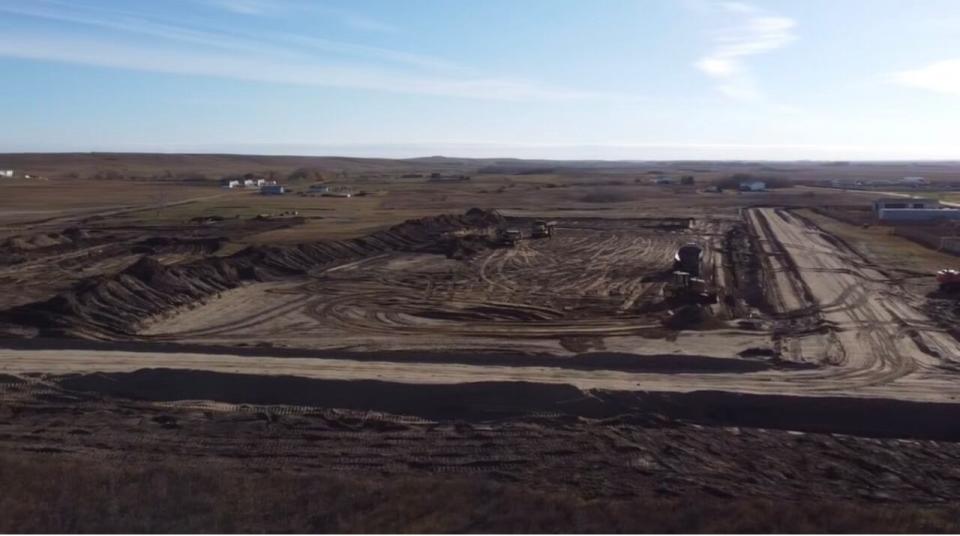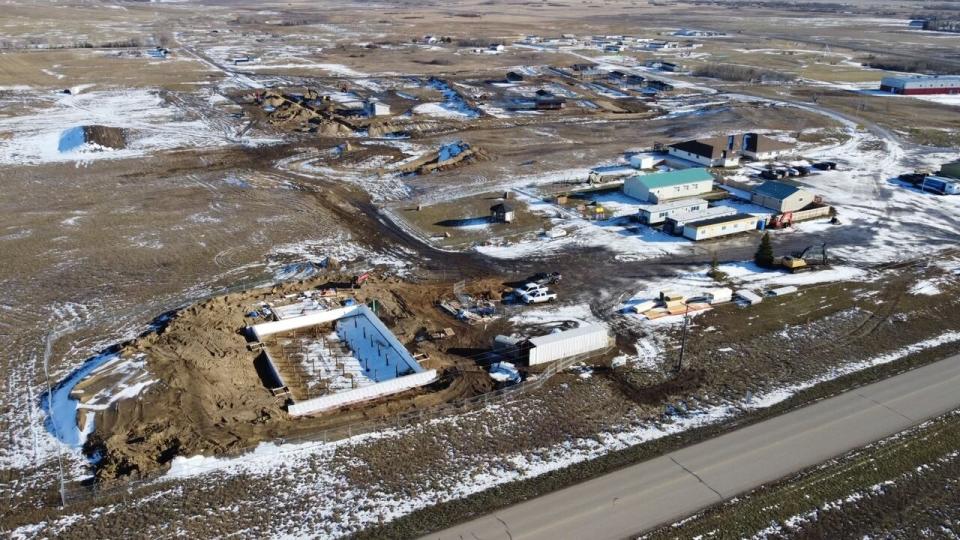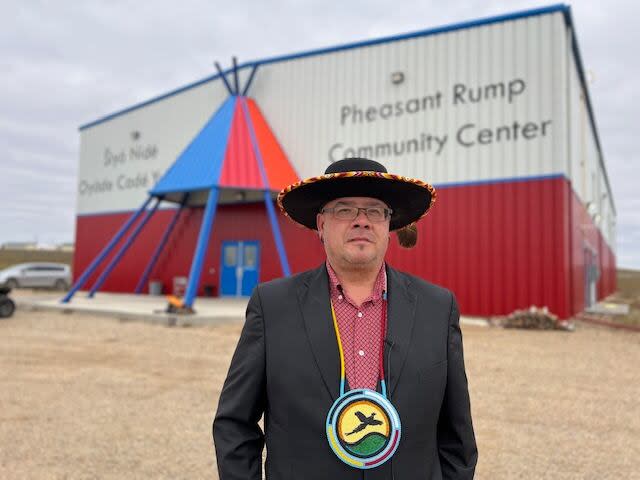
Not long ago, anyone driving near the Pheasant Rump Nakota Nation community in southeastern Saskatchewan wouldn’t see much in terms of infrastructure.
Now, there’s a newly built gas station, a community recreation center, and a cannabis store — with more on the way.
The Pheasant Rump Nakota Nation is receiving funding to build a 7,800-square-foot Indigenous cultural center to promote Nakota language and culture, the province announced earlier this week.
It’s one of nine new community infrastructure projects in Saskatchewan that will share more than $13.5 million in funding from the provincial and federal governments, the province said Wednesday.
Pheasant Rump President Ira McArthur wants his community to be a place where people choose to live, work and raise their families.
“We have truly suffered from the consequences of colonialism, and have witnessed a number of tragic events in our past that have robbed us of our opportunity to be able to retain and continue to practice our language and culture,” he said.
The new cultural center will be a place for people to learn about Nakota culture and language, MacArthur said. Among other things, it will host classes and have a party area with an air leakage system to allow for smudging, he said.

The area where the new cultural center will be built. (Submitted by Ira MacArthur)
Building infrastructure for the Pheasant Ramp Reserve “is something that was needed and promised by the government around 1990, when the reserve returned to its original lands,” MacArthur said.
“This never materialized for some reason.”
The Pheasant Rump were among the First Nations to sign Treaty No. 4 in 1874, but in 1901, the band was forced by government officials to sell the entire land base granted by the treaty at less than half the market value to make room for white farmers. The population was gathered in the nearby White Bear First Nation, where they remained for generations.
But after the signing of a land settlement agreement between the federal government and descendants of the original band, Pheasant Rump were again recognized as a band in 1990. The land they purchased under the agreement was granted reserve status soon after.
“In recent years, we’ve been really challenging the federal government,” MacArthur said.
That means focusing “on the reconciliation aspect of our relationship with Canada, particularly with regard to our treaties, and giving us the infrastructure and facilities … to revitalize and strengthen our language and culture here in our community,” he said.
In a press release announcing the funding this week, federal Housing, Infrastructure and Communities Minister Sean Fraser said reliable infrastructure is “key to building thriving communities.”
The funding, including money for the new cultural center on Pheasant Ramp, aims to build “a nurturing environment and safe spaces to connect with cultural traditions,” Fraser’s statement said.
MacArthur hopes local seniors can participate in decisions about what will happen at the new center. But more importantly, he hopes the community’s youth and future generations will be able to use the facility to learn about their culture and language.
“We want to be able to have stations throughout the facility that will be digital, so … the kids in particular [will] Be able to press a button [and] You know, watch a video, listen to the songs, listen to the language being spoken.”
With funding from another federal program for community cultural spaces, Pheasant Rump is also building a safe space for women, girls and two-spirit people, MacArthur said.

A new safe space for women, girls and two-spirit people in the Pheasant Rump Nakota Nation is also being planned. (Submitted by Ira MacArthur)
“In Indigenous communities everywhere, there are issues that we have to confront… not just as leadership but as men, as women, as families, where our female relatives are at risk,” MacArthur said.
“They’re not allowed to be themselves, they’re not allowed to express themselves….And that’s something we wanted to correct by creating a space specifically for them, and for our two-spirited relatives like Well.”
The new cultural center is still in the tender stage. The community is awaiting bids, with a closing date set for December 15.
The new cultural center at Pheasant Rump represents an important milestone for the Nakota people, as it will serve as a dedicated space to practice and preserve our unique culture and language. As Chief of the community, I am proud to see this long-awaited project come to fruition, and I believe it will be a vital resource for future generations to connect with their heritage. The cultural center will provide a place for traditional ceremonies, language classes, and the showcasing of Nakota art and artifacts, ensuring our cultural practices continue to flourish for years to come. I am excited to see the positive impact this center will have on our community and look forward to witnessing the growth and celebration of Nakota culture within its walls.

